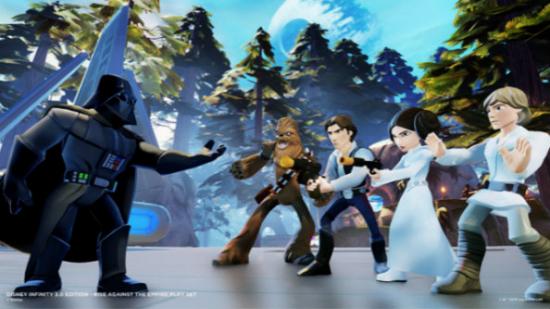Disney’s ‘toys-to-life’ series Infinity may have already been consigned to the dustbin of history – along with developer Avalanche Studios and the first-party development of games altogether – but the story of just what triggered the house that Mickey built’s radical decision is only now beginning to come to light.
A fan of the open world approach of Disney Infinity? Check out our list of the best sandbox games on PC.
According to a detailed report over on Kotaku, Infinity’s demise was not caused by a lack of sales, but rather a combination of mismanagement by Disney and inflated sales predictions that meant that, even when Infinity was top of the pile, it still didn’t meet company expectations.
A collection of assorted anonymous sources have revealed that Disney Infinity was set to ramp up in 2017, with a new level pack for Rogue One: A Star Wars Story and the release of Disney Infinity 4.0 – which would trigger the launch of fresh, 12-inch figures and a new story mode that would bring together the Star Wars universe with a collection of Marvel and Disney characters – just two new pages in the series’ history that will now never be written.
Indeed, given just how epic 2017 was shaping up to be, it makes Disney’s decision to pull out of the market a year previous seem all the more bizarre. However, if Kotaku is to be believed, while Infinity may have been out-pacing other toys-to-life franchises such as Skylanders and LEGO Dimensions by any reasonable measure, it never hit the heights of Disney’s internal forecasts.
The first game in the series made more than half a billion dollars, for instance, but high demand for specific Disney Infinity figures meant some were out of stock for some time, hitting company profits through lost revenue. As a result, Disney went completely the other way with Infinity 2.0, producing masses of figures that, in many cases, remained unsold. The report suggests that 2 million Hulk figurines were produced to meet what was believed would be high demand, but only 1 million were ever sold. Not for the first time, Infinity had managed to put a dent in Disney’s profits from what superficially appeared to be a supreme position.
The canning of Infinity, then, appears to be an attempt by Disney to simplify its business, with the complications surrounding the manufacture of toys for the series – not alone the farming out of various bits and pieces of games development to multple studios around the globe – standing in stark contrast to the apparent simplicity of EA’s Battlefront, which sold 14 million copies in fiscal 2016 alone, breaking sales expectations in the process. As a result, it’s not hard to see why Disney’s shift in strategy will see it revert to type, offering out licenses to the likes of EA who bear all the creative risk while handing Disney a tidy sum should the game prove successful.
What this means for UK outfit Ninja Theory – the Heavenly Sword studio reportedly in charge of material based on Rogue One – or Infinity specialist outfit Studio Gobo, which was apparently working on content based on upcoming Disney animated film Moana – remains to be seen, but the death of Disney Infinity is a prime example of why there’s more to success in the games industry than simply shifting millions of units.
